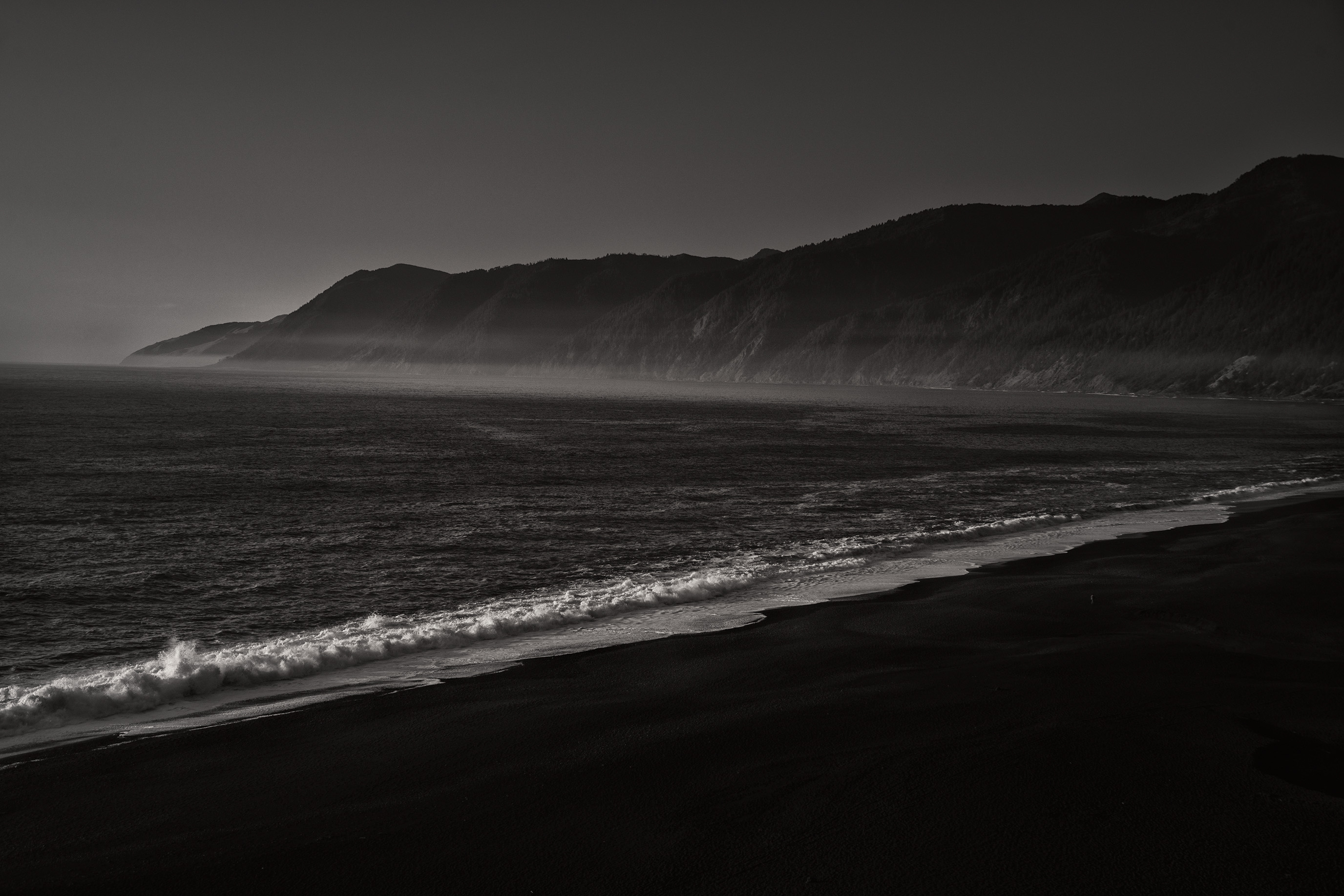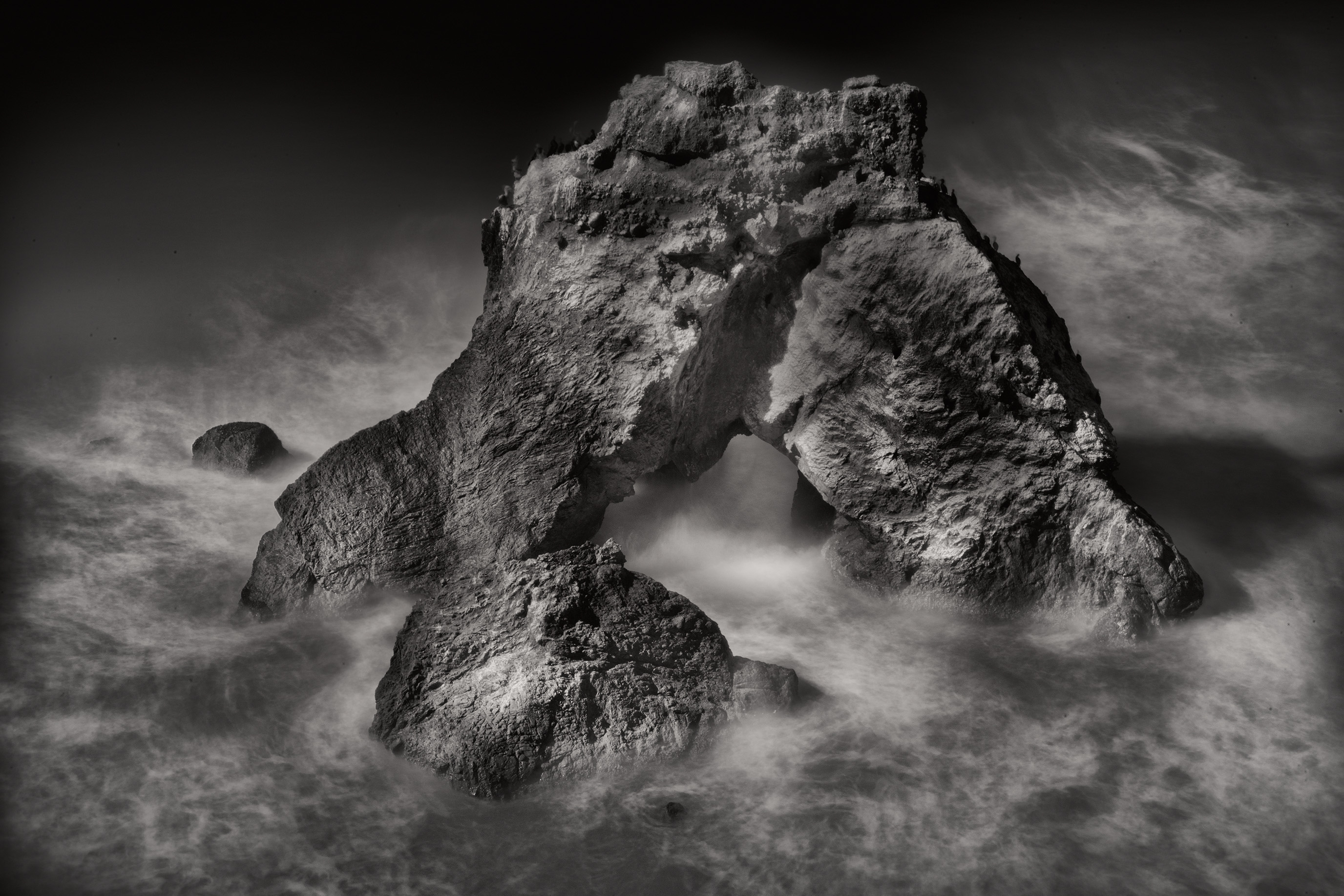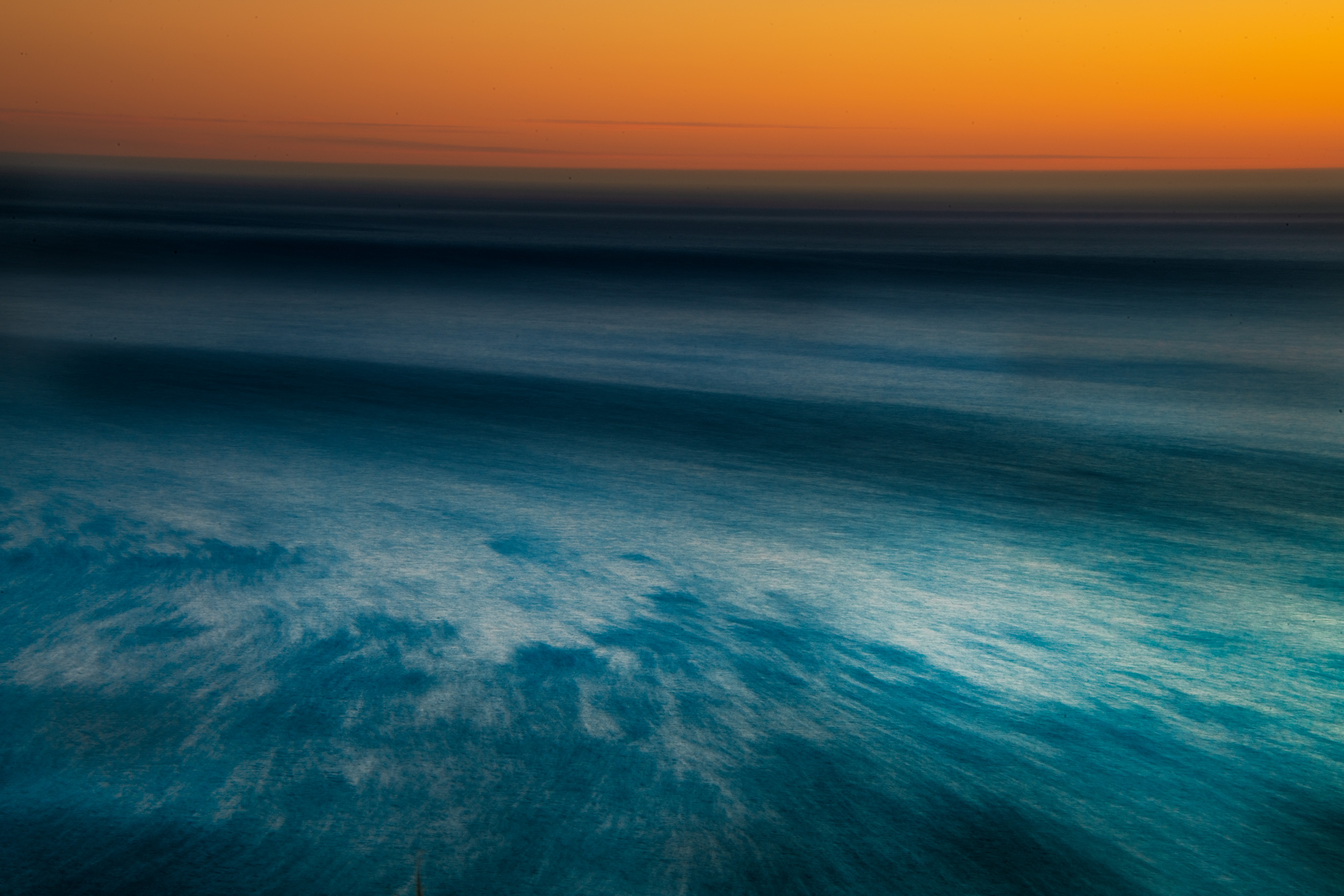
Some two hundred miles north of San Francisco, California lies a wilderness area known as the Lost Coast. In these ever-more-crowded times, the sobriquet “Lost Coast” is often used with some affection to encompass an almost entirely empty wilderness; but back in day when efforts to populate this stubborn, obdurate, and unyielding shore came to nothing, the use of the descriptive phrase surely was indicative of a measure of defeat and unhappiness.
This is the most wild, undeveloped, and remote portion of the California coast, and it is surprising that it lies so close to San Francisco.
Starting in Orange County, Highway 1 (California SR 1) doggedly follows the coast of California north, passing through Los Angeles and Ventura Counties, the Central Coast, and Big Sur. In Big Sur, a land almost as topographically rugged as the Lost Coast, Highway 1 came near to meeting its match, but finally barreled through in a series of bridges built between 1919 and 1937. (You can click here for some of my images of Bixby Bridge along the Big Sur coast.)
Further north, above San Francisco, Highway 1 follows the Mendocino shore until the town of Rockport, where it turns inland to avoid the steep mountains of the King Range and the Lost Coast.

Extending for about sixty miles, the Lost Coast region sits astride Mendocino and Humboldt counties, and administratively is mostly part of the King Range National Conservation Area (administered by the Federal BLM) and Sinkyone Wilderness Park (under the State of California). There’s one decent paved east-west road that more-or-less bisects the Lost Coast, ending in the settlement of Shelter Cove on a small plateau above the ocean (population 693 as of the 2010 census).
It is to be noted that the other roads in this area are often of the muddy, four-wheel-drive variety, and that “shelter” and “cove” are relative terms. There’s no such thing as a sheltered cove along this wild-and-woolly coast, no breakwaters, no piers, and no docking or anchoring in the water.

The Lost Coast Trail (LCT) runs the length of Lost Coast, although the most common backpacking trip is north from Black Sands Beach in Shelter Cove to Mattole Point. With constant ups and downs, this is not a hiking trail for the faint of heart; an eye to the tide tables is essential, as portions of the trail are impassable at high tide.
The ocean here is a hungry sea. You don’t turn your back on it. Rip tides, sneaker waves, and undertow come standard. Walking along Black Sands Beach, the waves rumble on small-sized gravel, hissing like a thousand snakes on their way back to the ocean as though they’d like to take you with them, and it would be nothing, and you’d be gone in a snap.

Backwoods communities of off-the-grid hippies have persisted in this rugged and inaccessible area. In the 1970s a lumbering operation that later failed to make inroads against the natural topography burnt an earlier generation’s homesteads to the ground to keep squatters out. This hasn’t stopped those who like living on their own at the world’s edge from keeping to a rugged lifestyle, and in recent years the area is apparently awash in marijuana money. How this will shake-out as grow-it-yourself small farm marijuana is increasingly ceded to pot agri-businesses is anyone’s guess. But this is a region used to booming and busting.

The Lost Coast is one of those quintessentially remote American areas with a flavor all its own, formed by the rugged topography of the King Range where it meets the ocean as much as by those who have tried to occupy the land. I’d certainly recommend a visit, and getting to know the area—but this is not an area that gives up its secrets lightly or easily. It’s not that the Lost Coast is playing hard it get: it is hard to get there, both geographically and metaphorically. It is elusive in every way.

Jim Ruppel
13 Oct 2019Wow! Not only beautiful photos but you wax poetic too. Love it.
Harold Davis
13 Oct 2019Thanks Jim. As I have called myself Photographer As Poet, why not “Poet As Photographer”?
Martin Marchyshyn
13 Oct 2019Well done article, Harold. Thank you.
Interesting area of the coast … hope to be able to visit it one day.